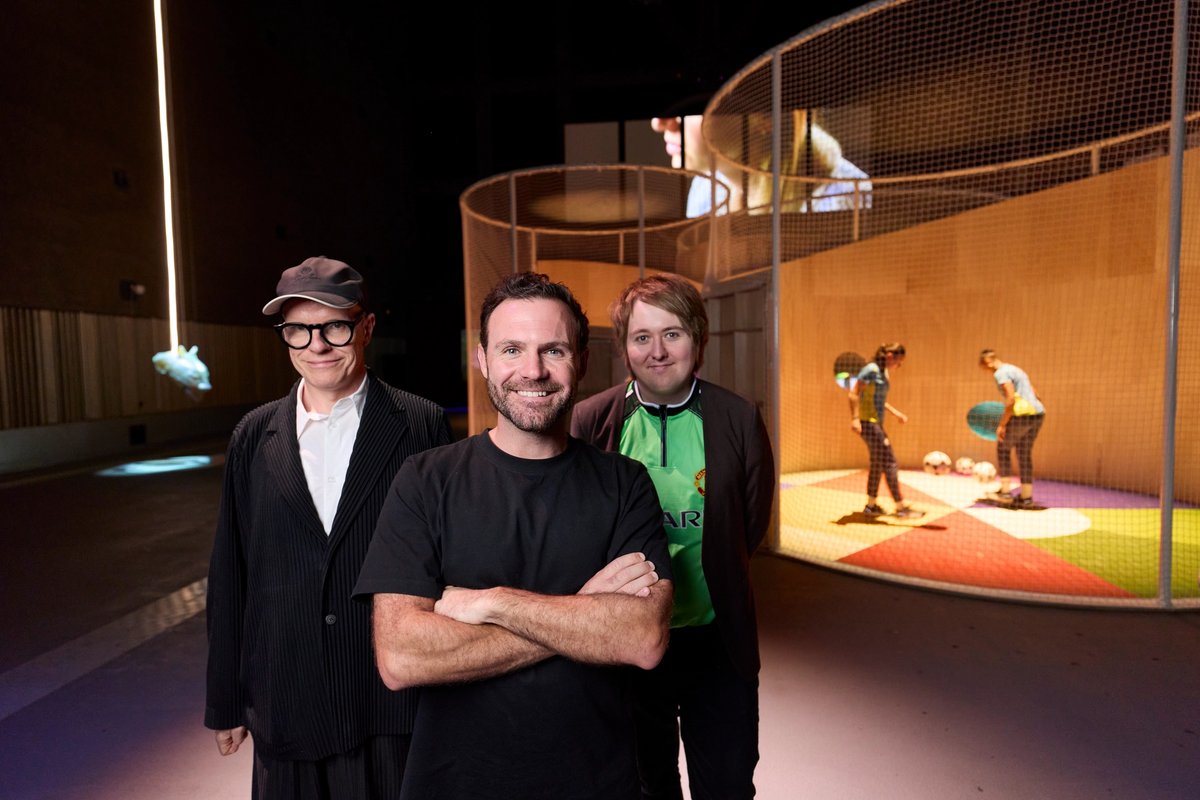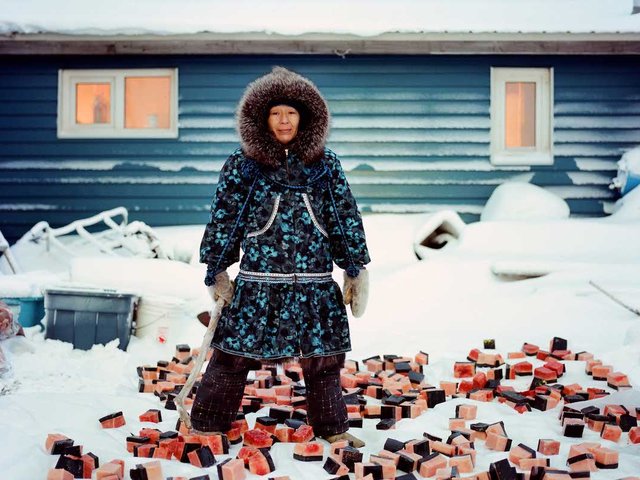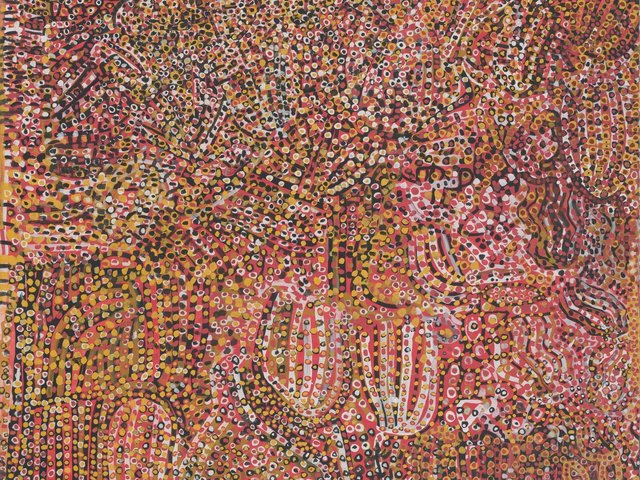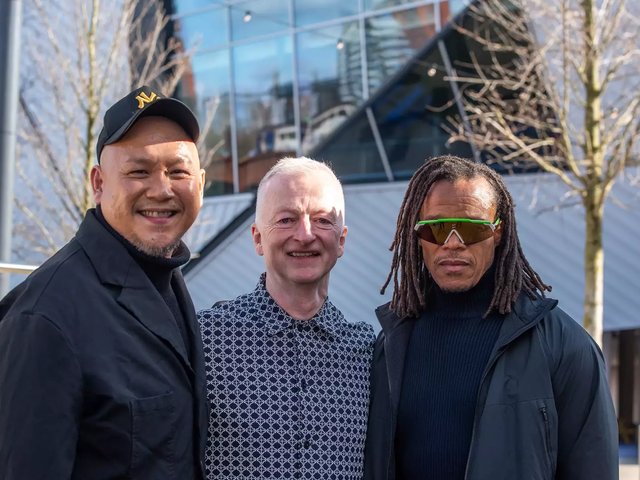The latest edition of Manchester International Festival—the first festival to commission and produce new works across all cultural sectors—takes place at venues throughout Manchester and also at Factory International’s 13,350 sq. m building known as Aviva Studios. We have selected three key art events from this year’s roster.
Football City Art United, Aviva Studios
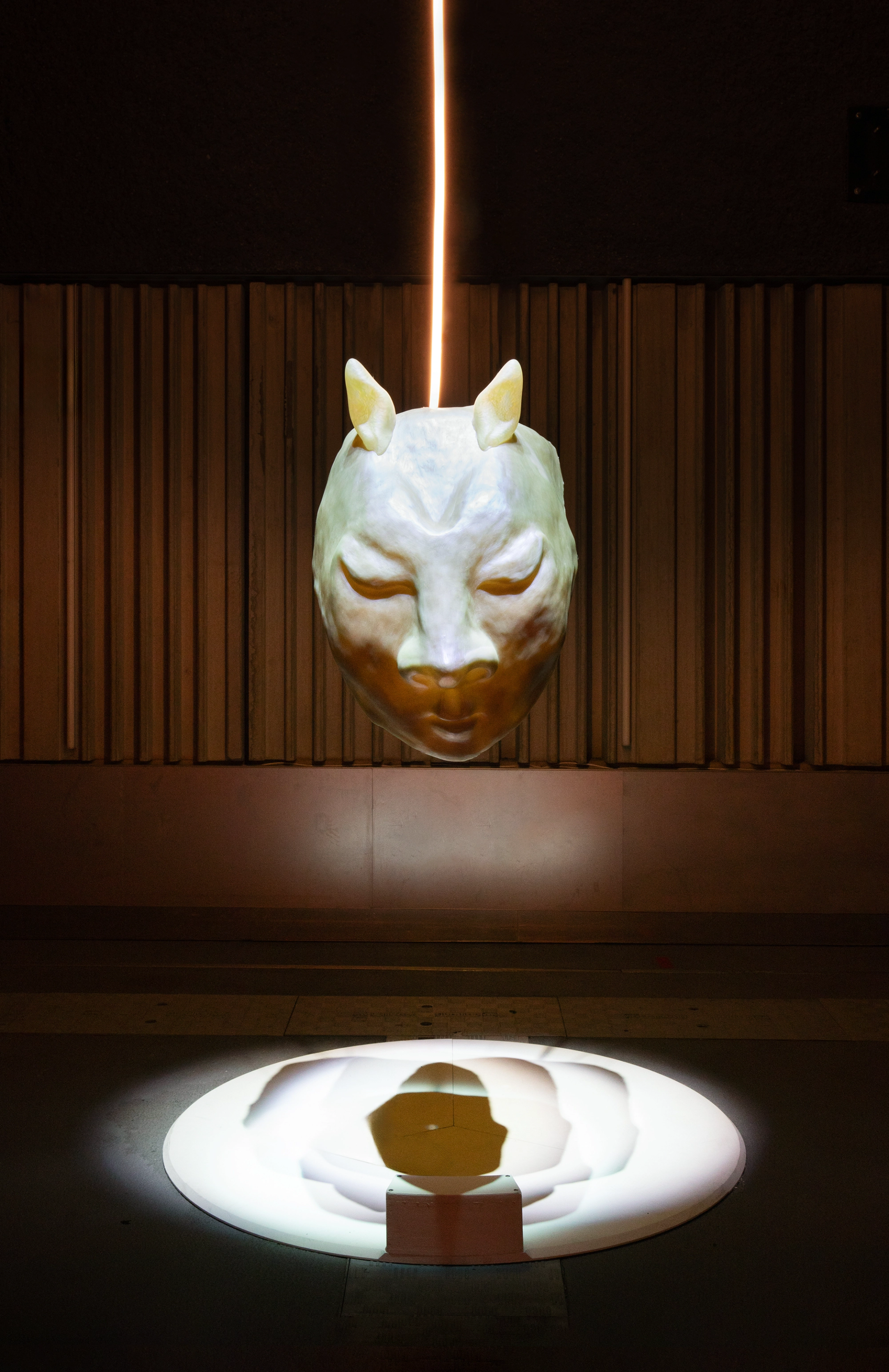
The Divine Puppeteer by footballer Ella Toone and the artist collective Keiken
Photo: Michael Pollard
Top football players have paired up with a selection of major artists for an exhibition at this summer’s Manchester International Festival, the biennial arts event with a focus on new works. “What happens when artists and footballers transfer ideas?” ask the organisers of the Football City, Art United exhibition at Aviva Studios (4 July-24 August), which includes 11 new works co-created by the footie-art partners.
The Manchester City and Netherlands star Vivianne Miedema has teamed up with the US artist Suzanne Lacy on a short film exploring football’s complex relationship with gender (What do women (footballers) want?). The England midfielder Ella Toone has, meanwhile, worked with the artist collective Keiken on an installation titled The Divine Puppeteer. The work, which features a hanging mask inspired by Toone’s spirit animal, the Shetland pony, reflects the player’s thoughts on “fate, connection [and] routine”, say the organisers.
The most effective work is by the former Dutch midfielder Edgar Davids and the US conceptual artist Paul Pfeiffer; their immersive installation, Crowds and Power, takes the form of a tunnel inviting visitors to “step into the thoughts, feelings, and rituals players experience as they move through the sacred space between the dressing room and the pitch”.
“This is an experience [Davids and the co-curator and football player Juan Mata] have experienced hundreds of times but anyone who is not a professional football player have not [been through that tunnel],” says Hans Ulrich Obrist, the exhibition co-curator.
The exhibition took four years to develop. “For some [artists] it’s about new encounters; for some, it’s about existing encounters but this is why [the show] took time to develop,” Obrist adds. The exhibition will tour and is due to open at an unnamed venue in China this November.
Santiago Yahuarcani: The Beginning of Knowledge, The Whitworth
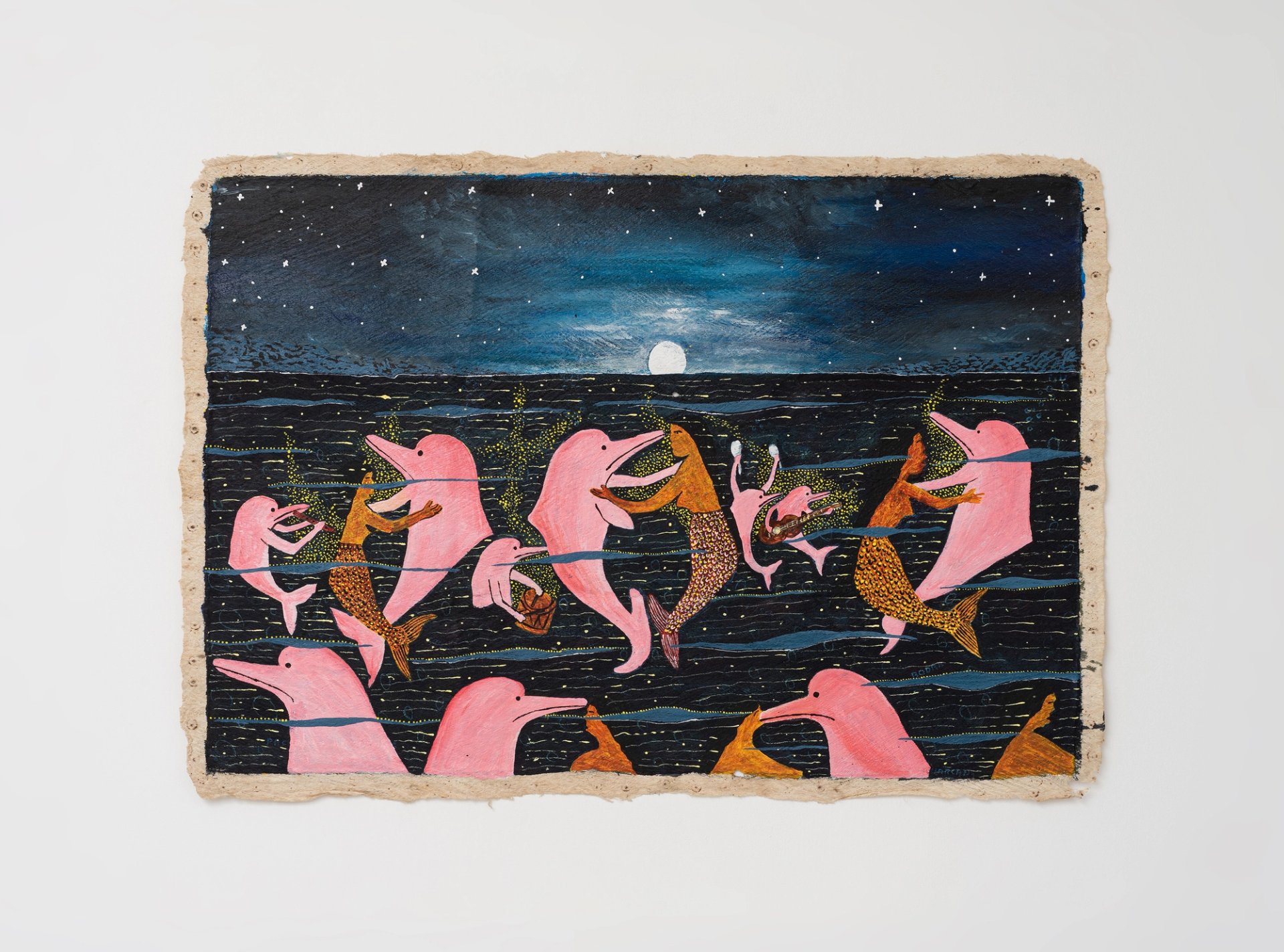
Santiago Yahuarcani, Sin título (Untitled) (2021)
© Santiago Yahuarcani. Photo: CRISIS Gallery
The Whitworth gallery has pulled off a coup with the first international solo show dedicated to Santiago Yahuarcani, the Indigenous activist and leader of the Aimeni (White Heron) clan of the Uitoto people in northern Peru (4 July-4 January 2026).
In than 30 works made since 2010, Yahuarcani—who is self taught—depicts animals, sacred plants and ancestral stories passed down through generations. His canvas is llanchama, a material he makes from the bark of native trees. “He began to understand how his work could help to share knowledge of the Uitoto people’s understanding of the universe,” says a statement, highlighting how his mother imparted “the origins of man and how the sky formed”.
Yahuarcani also throws light on the first rubber boom and subsequent genocide of the Uitoto people between 1879 and 1912. This issue underpins the work Untitled (2021) which shows a series of pink river dolphins embracing mermaid-like creatures. The dolphins have symbolic value in Uitoto culture but become predators in Yahuarcani’s painting, reflecting the “deceit and danger of outsiders with exploitative behaviour”, says a wall text, which explains that colonial violence at the time of the rubber boom re-shaped elements of Indigenous cosmology.
Yahuarcani tells The Art Newspaper that his main objective is to draw attention to the current challenges faced by Indigenous communities in the Amazon. “Migration is a problem. Young people leave the community and their families. There are many illegal activities, such as [extracting] oil, wood and other resources. The government looks at the money. Indigenous groups do not focus on the money; we want to look after nature, not destroy it.”
Fale Sā/Sacred House, Home
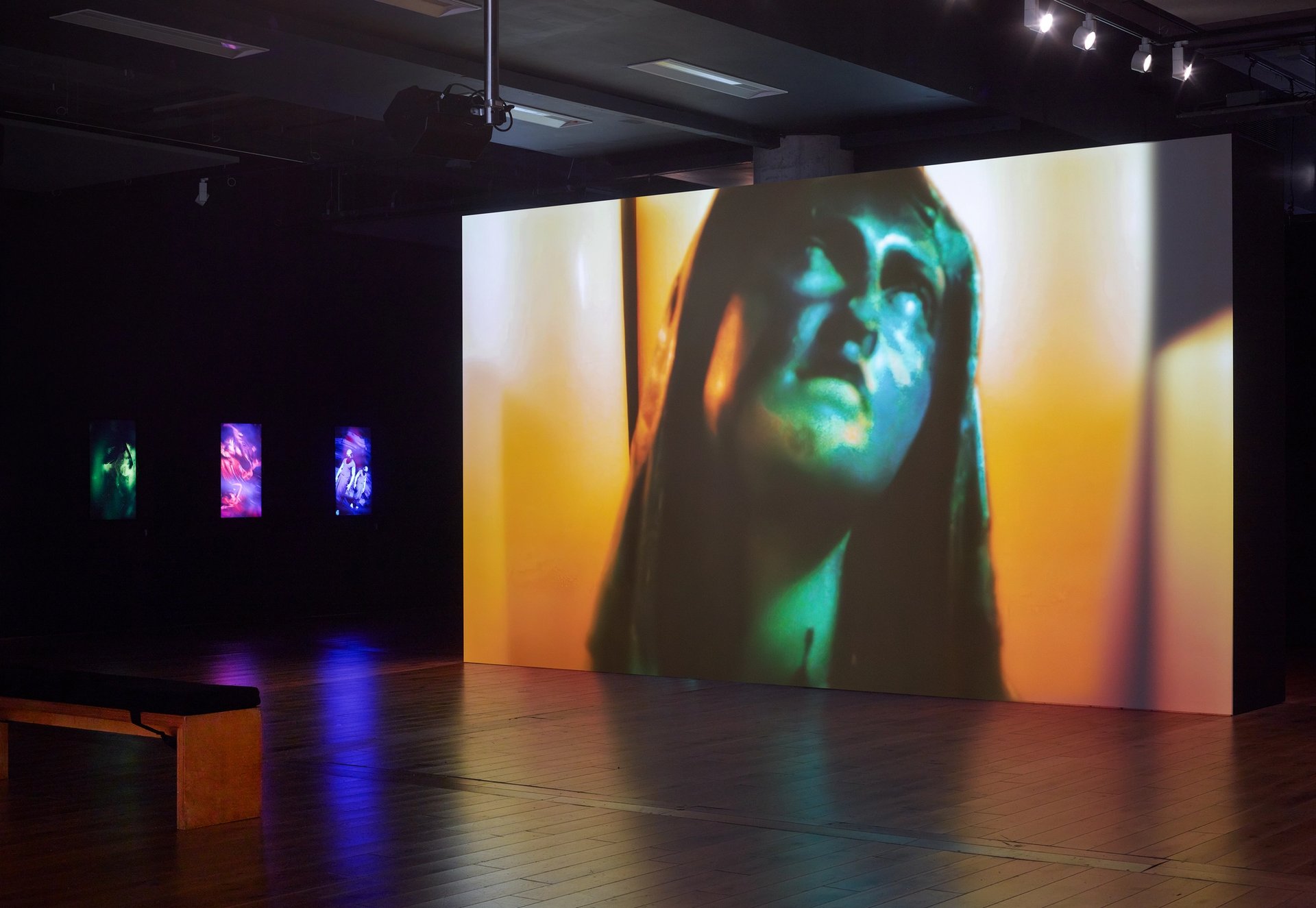
Installation view of Fale Sā, Sacred House by FAFSWAG
Photo: Michael Pollard
The queer Indigenous collective FAFSWAG has taken over Home arts hub for the festival, presenting Fale Sā / Sacred House (4 July-10 August) which the organisers describe as a digital art exhibition “exploring some of the major issues impacting Pacific peoples”.
FAFSWAG, a collective founded in Tamaki Makurau, Auckland, in 2013, says in a statement that “dreaming different means existing beyond the colonial gaze. It means rejecting the limited imaginations and narrow perspectives of its past forebearers and present descendants. It means reclaiming our stolen cultural inheritance and inhabiting the boundless imaginations of our ancestors.”
The Manchester show—the outcome of a two-year artistic residency—draws on rituals and ancestral stories from the Pacific Diaspora of Aotearoa New Zealand and the wider Moana, reflecting three Samoan cultural practices (Fāgogo, Sauniga and Talanoa).
Innovative and fantastical photographs and films that look to 1980s Harlem ballroom culture reimagine and reset the debate around colonialism (the accompanying events programme includes a Vogue dance workshop). A series of feisty portraits depict the collective members—including Tanu Gago, Tapuaki Helu and Māhia Te Kore—in all their glory.
- Manchester International Festival, various venues, until 20 July


